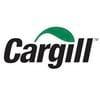Successful WT-PRRSV elimination in a 1500-sow farrow-to-finish system through mass vaccination and keep loading PRRSV negative gilts
Published: July 28, 2025
Source : G. Tian 1, X. Zhao 1, L. Huang 2,*, X. Qiu 2, L. Zhu 2, Y. Guo 2, J. Kolb 2 / 1 Yongkang farm, Changzhou; 2 Boehringer Ingelheim international trading (Shanghai)co.,ltd, Shanghai, China.
Summary
Keywords: None
Introduction:
PRRS has a significant economic impact on the Chinese swine industry. Since high swine farm density and a lot of constrains to controlling PRRS, elimination wild type PRRSV (WT-PRRSV) is very hard in China. Some farmers used repopulation and depopulation successfully eliminated WTPRRSV, but this method is very costly. We report here on the successful elimination of WT-PRRS virus from a 1500 sow farrow-to-finish production system easily to success.
Materials and Methods:
In 2006 summer, a closed 1500 sow production system suffered highly pathogenic PRRS outbreak. Nursery mortality went up to 30% and caused abortion storm in the next 1 month. Then 3 commercial vaccines were chosen one by one to control PRRS, but mortality still moved between 15%> 30%. Since March 2008, Ingelvac PRRS MLV was used to control PRRS, and executed as below: stop loading gilts for half year, gilts isolated at least 2 month and vaccinated twice before moved to breeding herd; breeding herd vaccinated 2 times at beginning apart 30days, then quarterly vaccination. Piglets vaccinated at 15 days. All the nursery and finishing sites were operated strictly all in/all out by site. Farm was just open to load PRRS negative gilts twice from 2008 to 2015 and continued using Ingelvac PRRS MLV for 7 years. Different age pigs’ serum samples were collected for disease monitor 2 to 6 times every year. Serum samples collected from 2009 to 2015 is 280, 90, 31, 87, 110, 136 and 80 separately. All samples were individually tested on the IDEXX PRRS 2XR ELISA; then pooled 5:1, with the pools tested using a PCR and sequenced PRRSV positive samples at Nanjing agriculture university diagnostic laboratory. Local veterinary station collects 30 tonsil samples to test W-T PRRSV every half year.
Results:
Both serum and tonsil samples from growing pig sites have tested W-T PRRSV negative by PRRS PCR and also not show PRRS clinical signs since 2014. W-T PRSSV positive rate within serum from 2009 to 2014 is 22.2%, 11.1%, 16.1%, 5.7% and 4.5%. W-T PRSSV positive rate within Tonsil from 2009 to 2014 is 66.7%, 41.7%, 16.7%, 8.3% and 8.3%. Meanwhile, wild-type CSFV and PRV were also eliminated from 2013.
Conclusion:
Continued use of Ingelvac PRRS MLV and just loading negative gilts twice from 2008 to 2015 is very important to this successful elimination. We can learn from this case and continue using one effective PRRS MLV and loading negative gilts can successfully eliminate wild-type PRRSV.
Disclosure of Interest: None Declared.
Published in the proceedings of the International Pig Veterinary Society Congress – IPVS2016. For information on the event, past and future editions, check out https://www.theipvs.com/future-congresses/.
Content from the event:
Related topics:
Recommend
Comment
Share

Would you like to discuss another topic? Create a new post to engage with experts in the community.









